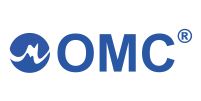Optical emission spectrometry involves applying electrical energy in the form of spark generated between an electrode and a metal sample, whereby the vaporized atoms are brought to a high energy state within a so-called "discharge plasma". Spectral lines
Manufacturer: Hitachi High-Tech, Japan
The major features of the equipment will be as follows:
• Robust, light metal housing
• Spark excitation: For quantitative analysis, grade identification and grade verification, spark excitation in argon.
• Spectrometer software for spectrometer control and data processing.
• Dust protected with a large TFT sunlight readable color touch screen display.
• Display of results up to 3rd decimal
• External USB hard disk drive (no external power supply)for data storage
• A multi-purpose trolley/holder for positioning the sample probe for transport or stationary measurement.
• Starter kit (consumables) will be included e.g. electrodes, brushes, calibration samples, quartz windows and filter mats.
• Documentation will include: Basic Operator manual, Windows licensed software (latest windows edition). The configuration of the system shall be as follows based on testing requirement: S.N Configuration required Technical Specification 1 Calibration Modules Pre installed calibration modules to test Fe, Cu, Ni base samples with calibration range as given in Table 2( Fe Orientation, Cu Orientation, Ni Orientation and subprograms) configuration with UvTouch Probe, And Additional Base Module – Al, Ti, Co,Zn, Sn base Configure with Normal Spark probe only, All element channels as mentioned in module overview, Complete calibration for this base including sub programs
• Set of recalibration samples 2 UV sample probe (spark mode with UV optic) Pluggable UV sample probe suited for the determination of elements e.g C (for lower LODs compared to the optical system in the main unit) P,S,N,B. on probe display for result reading and system control. 3 Spark Probe Additional Base Module – Al, Ti, Co,Zn, Sn base *Configure with New Spark probe only
• All element channels as mentioned in module overview Complete calibration for this base including sub programs
• Set of recalibration samples 3 Transport trolley Safe standing and easy operation of the instrument on- site by big rear wheels (with lock brake) in combination with pivoted front wheels. Separate trolley to be provided for standard Argon gas cylinder 4 Battery Pack The battery pack shall enable more than 250 sparks 5 Printer For direct print out on site 6 Alloy Database Comprehensive material database with thousands of materials designations from all major organizations and industrial associations shall be capable to provide the following information • Chemical composition
• Standard reference
• Application guidelines
• Mechanical properties
• Expert function to create grade selections and more The technical features for each component of the equipment of shall be as follows 1 Optics
• High resolution CCD multi detectors 2 Weight
• Main unit weight should be less than < 20 Kg 3 Spark Excitation
• Digital pulse generation and offline digital pulse control
• High energy pre spark 3 UV Sample Probe (Spark Excitation)
• Argon flushed UV system for determination of C (if lower detection limits are required), P, S, B and additional elements.
• Pluggable sample probe
• Touch Screen display at Uvtouch Probe
• Adapter and electrodes should be capable of being exchanged without tools
• Start and reset buttons on probe handle
• Probe length >3m • Probe Weight < 2.5kg
• Display on probe, system control with probe display
• A multi-purpose holder for positioning the sample probe for transport or stationary measurement. 4 Software Calibration Logic
• Printing and storing of measurement values and protocols for post-processing
• Analysis
• Recalibration Standard samples, one set each ( Min 2 standards ) for all provided factory calibrations • Trolley • Battery power pack
